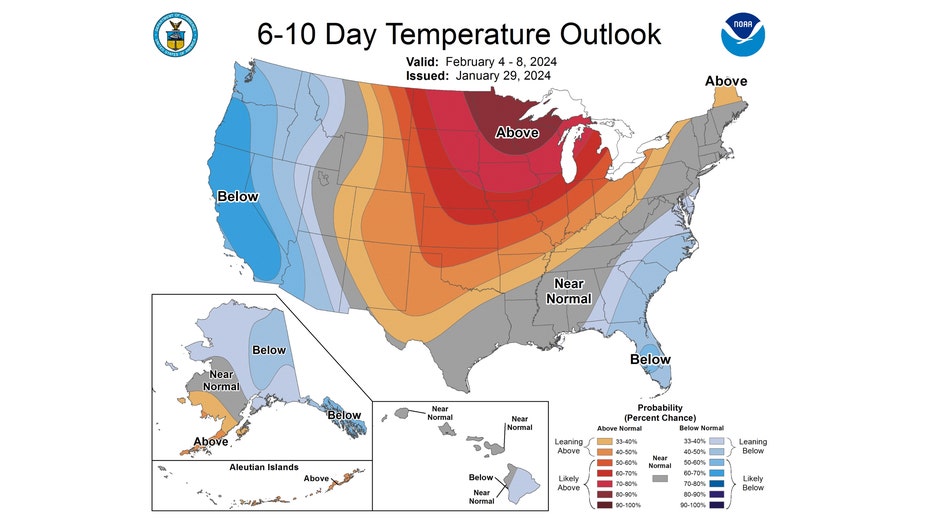Looking ahead to Chicago's spring

Tim's Weather Takeaways: Looking ahead to Chicago's spring
Meteorological spring is less than five weeks away. There are just 31 days left of winter.
CHICAGO - Meteorological spring is less than five weeks away. There are just 31 days left of winter. We may be past the worst of it.
We ended a streak of nine straight days below average temperatures on Jan. 21. We ended a streak of 10 straight days with a trace of snow or more at O'Hare on Jan. 14 for a total of 14.2 inches during the period. That's nearly half the snowfall we see in an entire season.
Despite those bumps in the season's road, overall, this winter hasn't been that harsh. The "Accumulated Winter Season Severity Index" or AWSSI (or "misery index") calculated by the Midwest Regional Climate Center is an ongoing measure of the severity of the season. They rate Chicago's winter so far as "moderate". That is one level up from the least miserable level of "mild". The more miserable levels are "average", "severe", and "extreme".
The longer-range forecasts still have a strong signal for more of the same. More relatively mild weather might be ahead. More on that below. So with winter held in check for now, why not look ahead to spring?

December ended up being nearly 9 degrees above average. Now January, despite the cold snap a couple of weeks ago, is above average again overall. It appears the relatively mild pattern we have seen this winter will continue right through spring according to NOAA's seasonal temperature outlook. The forecast favors us to be above average overall from March through April.
I want to offer a little help in putting this forecast into context. Meteorological spring includes the months of March, April, and May. The average high temperature for March starts at around 41 degrees and climbs to 53 degrees by the end of the month. In early April, the average high is around 53 degrees and climbs to 65 degrees by the end of the month. May starts with average highs around 65 degrees and by the end of the month the average high is 76 degrees. With any longer-range forecast like this, it's important to remember we are looking at an overall forecast. There could and most likely be days below average, but when it is all said and done, according to this forecast, our spring should end up being above average.
The northern tier of our country, the Ohio Valley, the Pacific Northwest, and all of Alaska are favored to be above average overall this upcoming spring. Everywhere else there are equal chances of being above or below average in terms of temperature.

The spring months are normally prolific precipitation producers. March squeezes out the 8th most precipitation annually on average, April ranks 4th, and May produces more precipitation on average than any other month. The official spring forecast gives us equal chances for above or below-average precipitation. The central plains, Gulf Coast, and southeast are all favored for above-average precipitation. A portion of the Pacific Northwest and northern Rockies is the only part of the contiguous US that is favored to have below-average precipitation overall.
It might not be officially spring for another 31 days, but it will soon feel like spring. Today will be the ninth straight day with above-average temperatures. That streak could stretch to 19 straight above-average days according to our Fox model long-range forecast.

Most of the next week will feel like the middle of March with highs in the 40s. By the end of next week, it will feel more like the middle of April than the early part of February. The longer-range temperature outlooks from the Climate Prediction Center corroborate this with a strong signal for a milder pattern into almost the middle of February.

The 6-10 day temperature outlook forecasts northern Illinois and Indiana to be "likely above" normal overall. This covers the period from Sunday through the following Thursday.

The strong signal continues with the 8-14 day temperature outlook. It also has us "likely above" average. This covers the period from next Tuesday through the following Monday. It also shows a 70% to 80% probability of being warmer than average overall.
All the long-range forecasts may suggest milder-than-average weather over the next several weeks but it doesn't mean we are done with snow. March averages 5.5" of snow and April averages 1.3".

